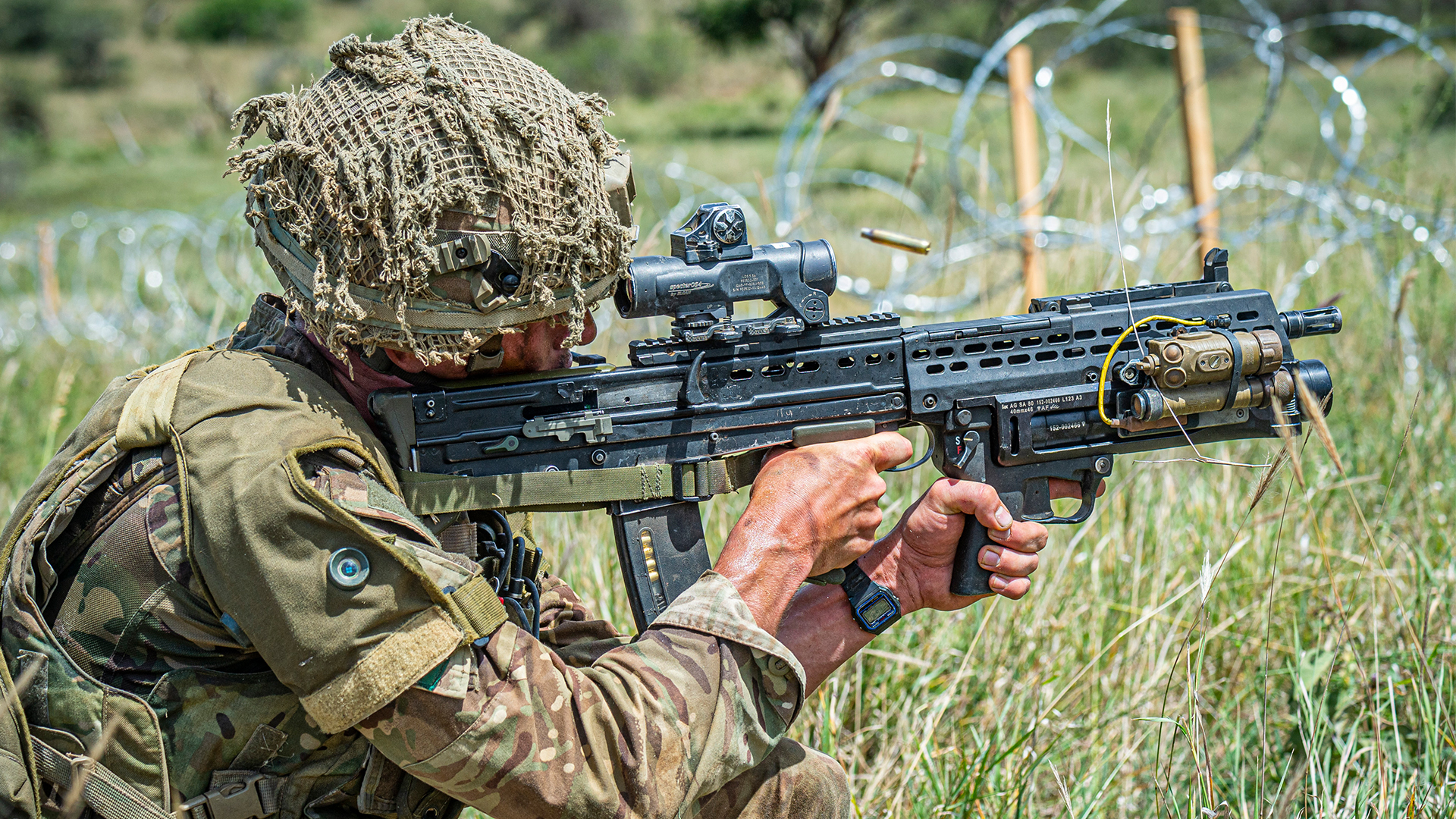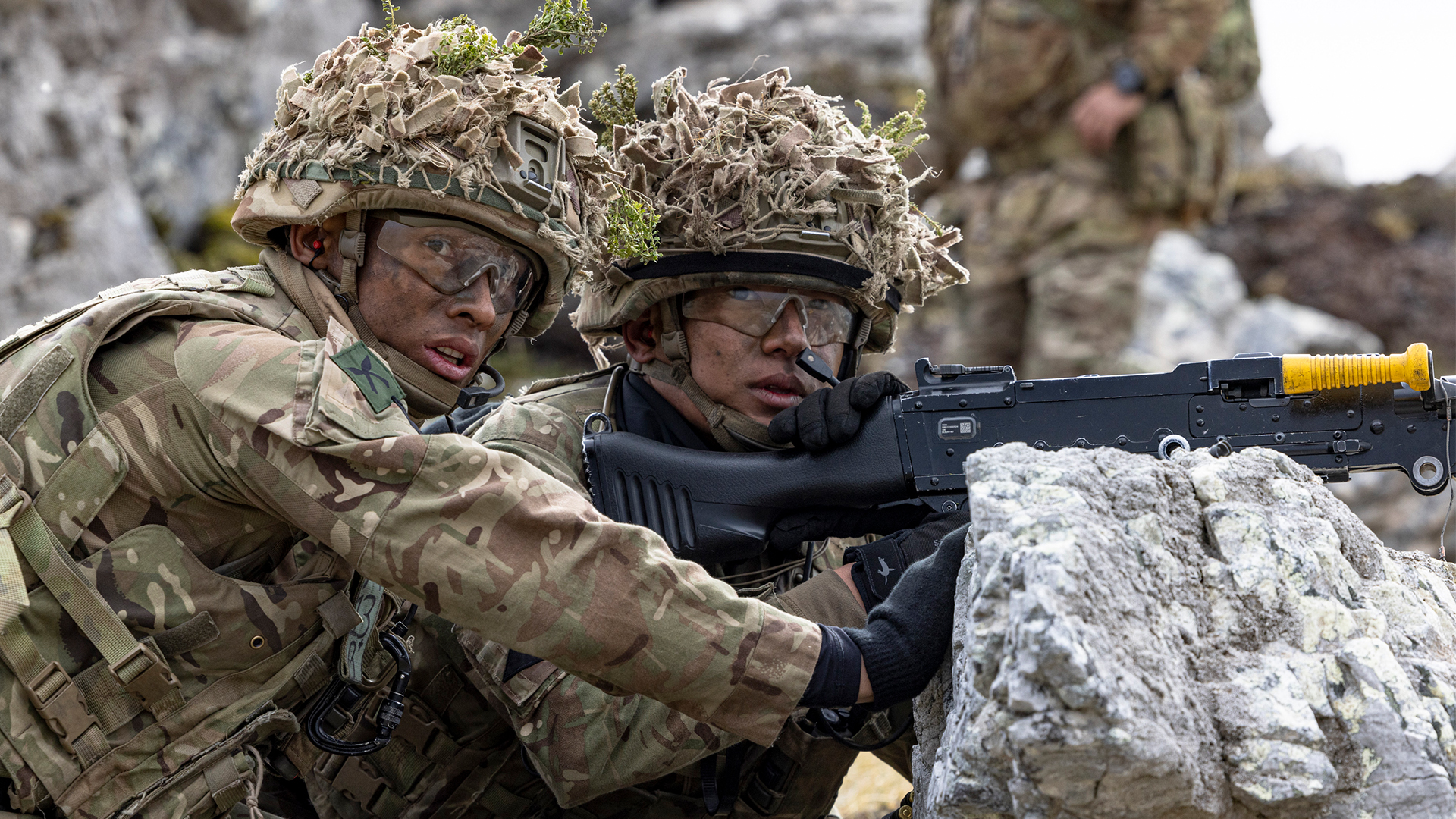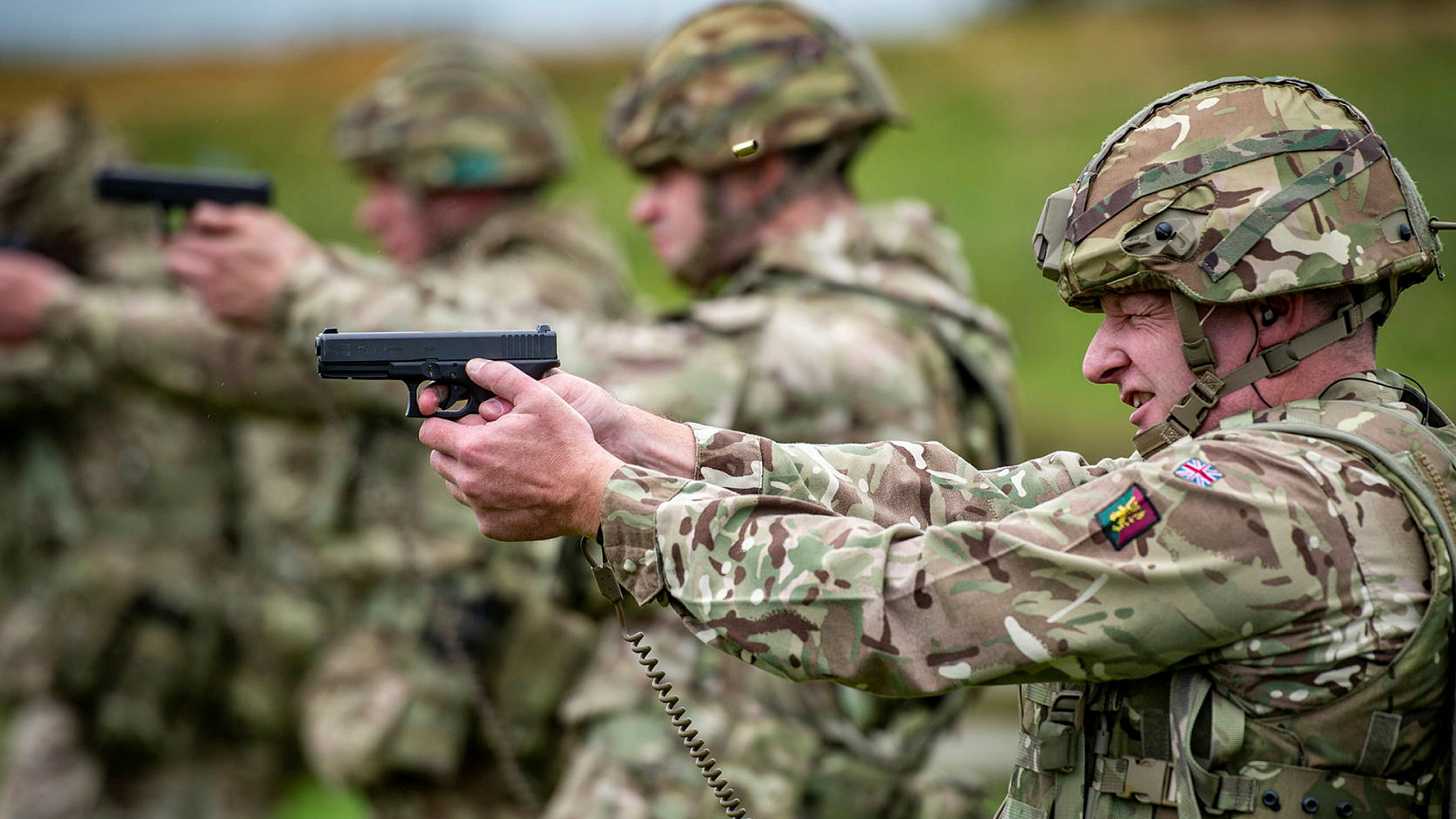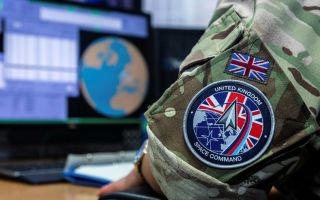Gearing up for the fight: How the modern infantry section is equipped for war
If you join a frontline unit in the British Army, the weapons you're trained to carry and how you use them are down to centuries of technological development and lessons learned in combat.
Here we'll go through what a typical British Army section would be armed with – and why.
There are eight to 10 troops in a section. Around six will carry the SA80 L85A3.
The L85 is the Army's main assault rifle, 5.56mm calibre, capable of automatic fire and accurate out to 600m when fired as a section.
This rifle can be equipped with an underslung grenade launcher, and the Heckler and Koch UGL allows the soldier to deliver fragmentation munitions out to 350m.
While it can add weight to the system, it enables troops to have a chambered grenade ready to fire while continuing to operate the SA80.
The UGL can be distributed at a rate of two per section, resulting in a heavier and more flexible way to lay down fire, and the range goes far beyond that of a standard hand grenade.

Speaking of range, there was a move in 2009 to return to 7.62mm calibre weapons, which has ended up adding a couple more items to the inventory of the modern section.
In Iraq and Afghanistan, British troops, with their 5.56mm L85s and Minimi light machine guns, found they were being outgunned.
Enemies like the Taliban realised there was a limit to the distance the Brits could reach out to, and so made use of weapons like the 7.62mm Dragunov designated marksman rifle, which could fire further.
Now, the modern British Army infantry section can carry the 7.62mm GPMG – the general purpose machine gun, offering longer range fire support and area denial.

Soldiers may also carry the L129 A1 Sharpshooter, a designated marksman rifle for dealing with longer range threats.
The best shot in this section receives this. They usually agree among themselves who that is.
Sidearms are also commonly carried. This wasn't the case in World War Two, where it was usually only the officer who would carry one.

Nowadays, each soldier can carry a Glock 17 as a backup should their main weapon suffer a stoppage.
The Glock 17 Gen4 is lighter and more accurate than its predecessor, the L9A1 Browning Hi-Power, and has an increased magazine capacity of 17 9mm rounds.
The Glock operates without a manual safety catch, so engaging a target takes less time when it's needed most.
Back in World War Two, infantry soldiers would fill their side pouches with 30-round .303 magazines for the Bren gun.
And while today many will carry a sidearm, that tradition continues with the section also carrying extra ammo for the GPMG.









